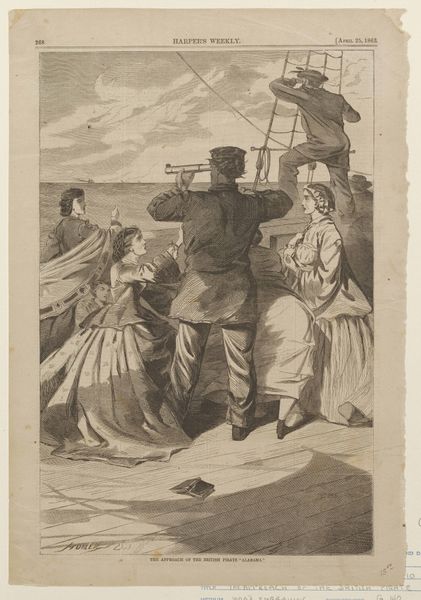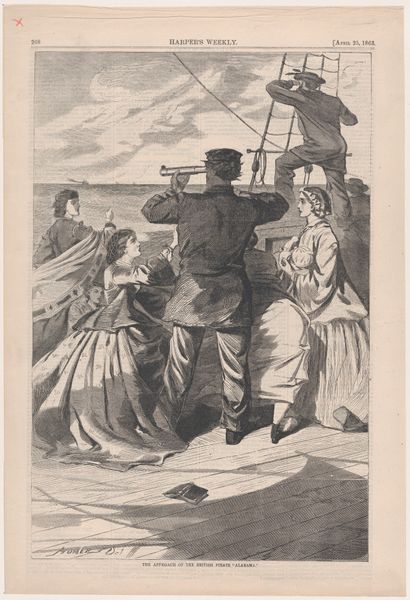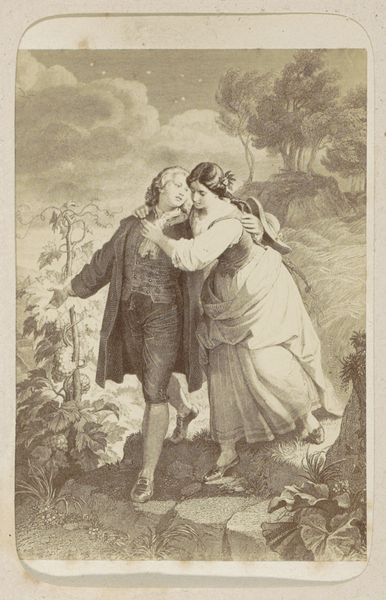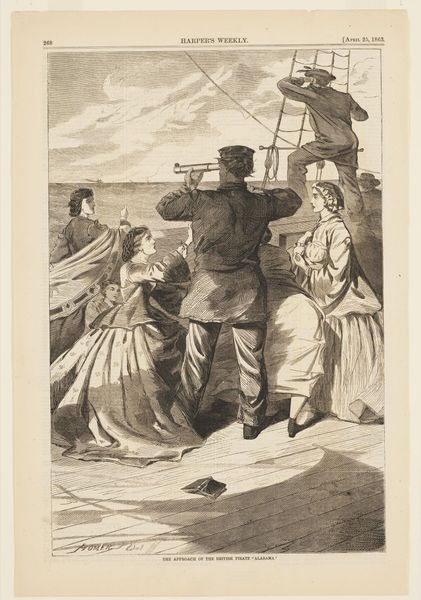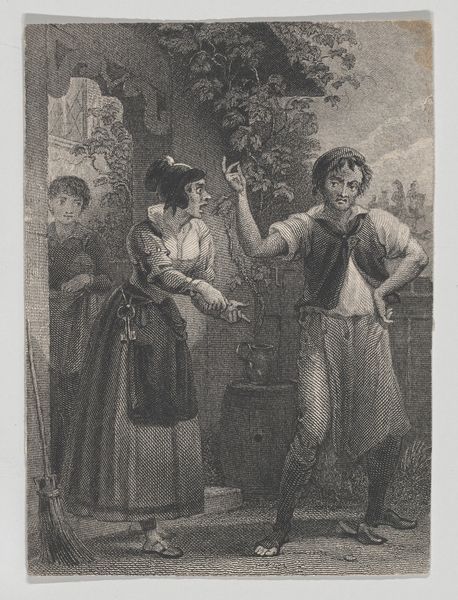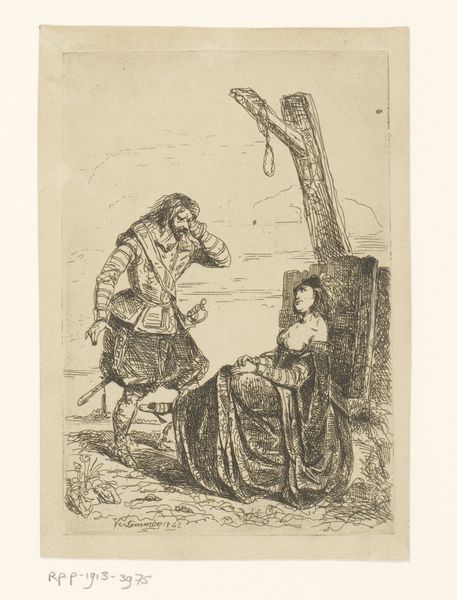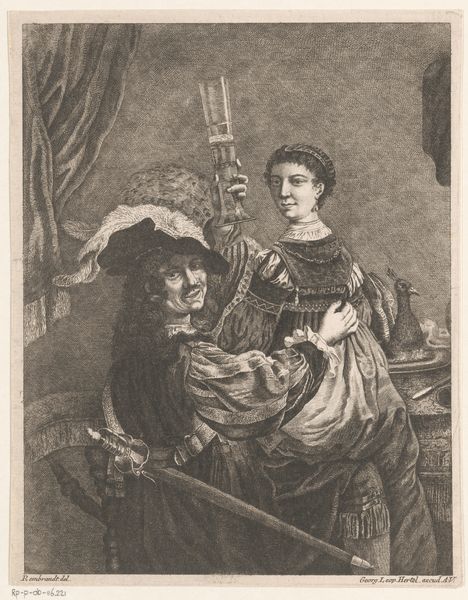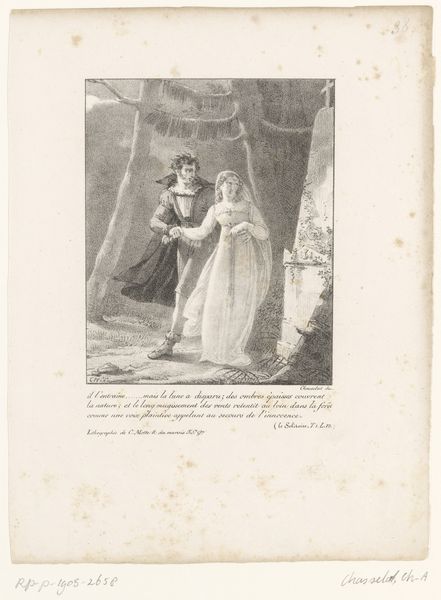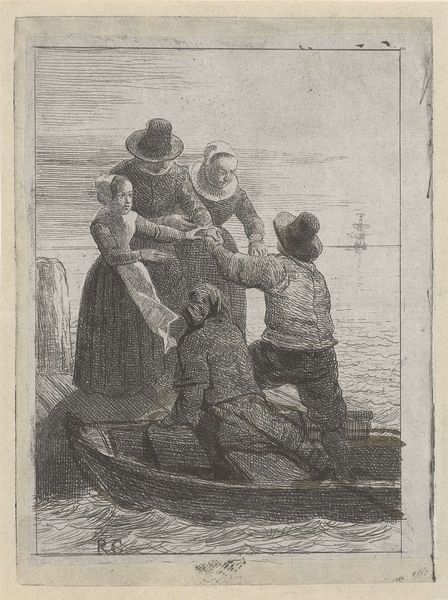
drawing, print, engraving
#
drawing
#
narrative-art
# print
#
landscape
#
figuration
#
romanticism
#
history-painting
#
engraving
Dimensions: sheet: 3 11/16 x 2 3/4 in. (9.3 x 7 cm)
Copyright: Public Domain
Asher Brown Durand created this engraving, "Greek Lovers," sometime in the nineteenth century. We see a man and a woman, presumably the lovers of the title, escaping by boat amidst a tempestuous sea. It's a scene ripe with romantic drama. The image's meaning lies in its visual codes and cultural references, tapping into the nineteenth-century fascination with classical antiquity. But why Greece? In the early 1800s, Greece was fighting for independence from the Ottoman Empire, a struggle that captured the imagination of Western Europe and America. Durand, likely made this image to evoke contemporary issues while appealing to popular tastes for sentimental narratives. To truly understand this artwork, we can delve into the historical context of nineteenth-century America. How did social class, political movements, and economic structures influence its creation and reception? Further research into Durand's other works, and the publications in which his engravings appeared, will reveal even more about the social and institutional forces that shaped this image.
Comments
No comments
Be the first to comment and join the conversation on the ultimate creative platform.
